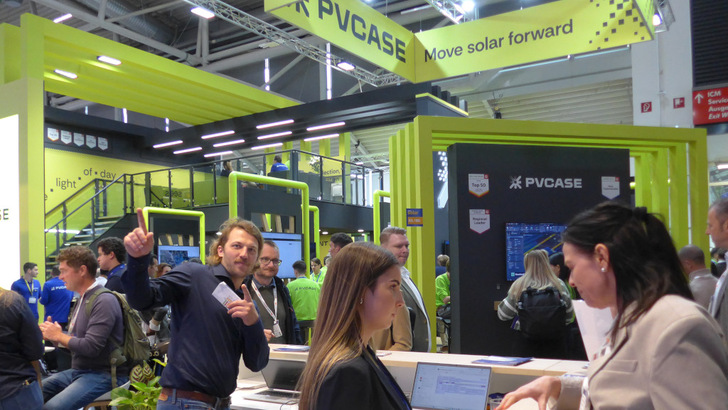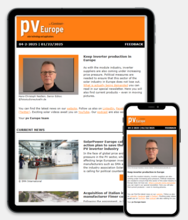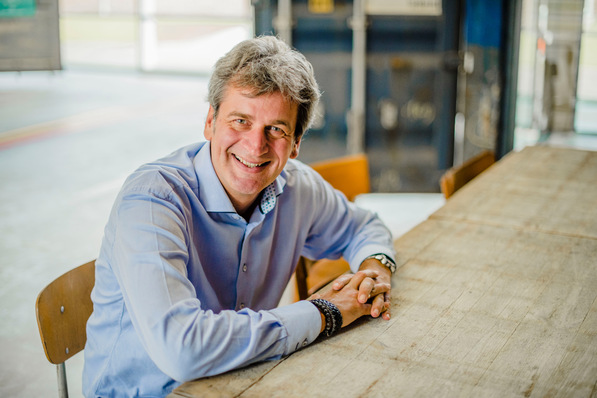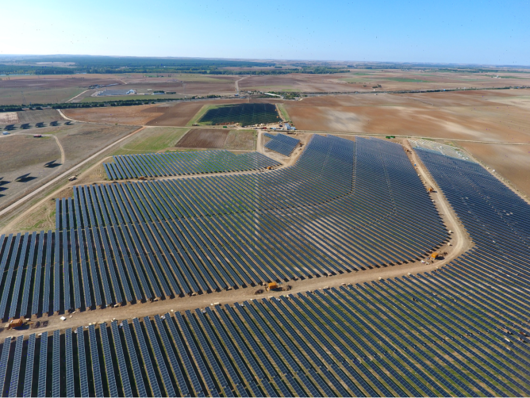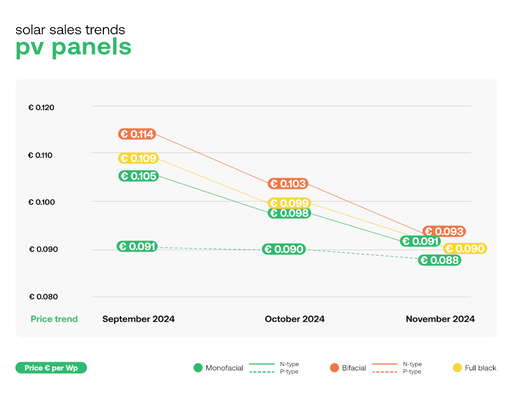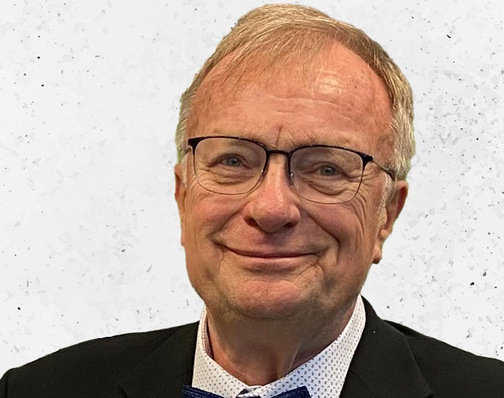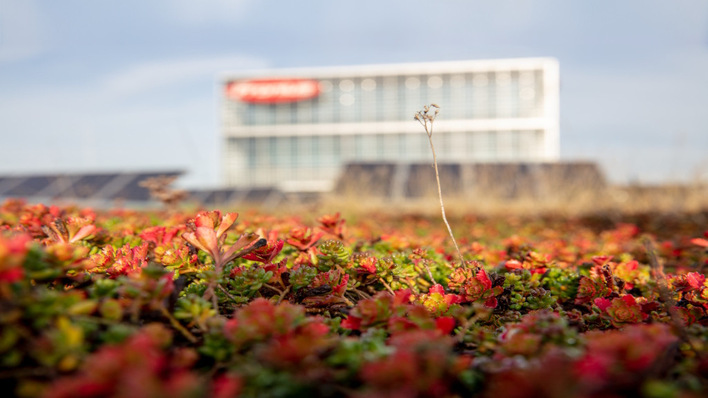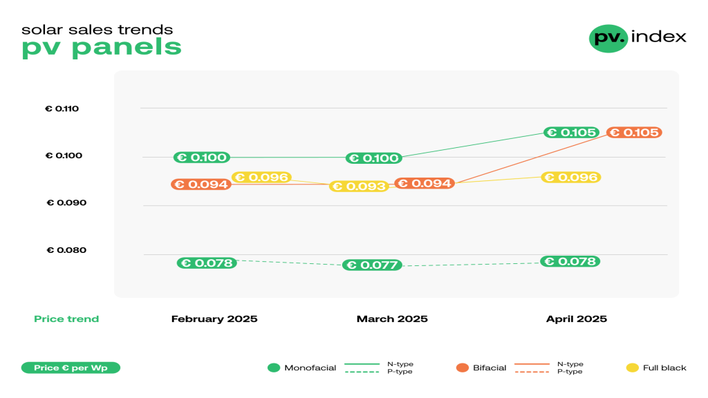While the energy transition is sometimes disparaged in political discussions, this year's The smarter E Europe was characterised by optimism and a focus on the future. Although the visitor and exhibitor records of 2024 were not quite surpassed, the rear halls of the Munich exhibition center were at times almost impassable. 2,737 companies and organisations from 57 countries presented their new products and services, attracting around 107,000 trade visitors from 157 countries. With more than 2,600 participants, the accompanying conferences and side events also met with great interest.
Solar Investors Guide: More innovation than ever before
“Accelerating Integrated Energy Solutions” was the motto of this year's The smarter E Europe with its four trade fairs Intersolar Europe, ees Europe, Power2Drive Europe, and EM-Power Europe. With the global expansion of renewable energies in full swing, the challenge now is to make the energy system more flexible, digital and integrative. “The smarter E Europe was once again the blueprint for the climate-neutral energy world of the future,” said Markus Elsässer from organiser Solar Promotion. “The technologies and solutions are available. Now it's a matter of continuing along this path with determination.”
Latest market figures presented
The trend toward integrating photovoltaics into the energy system for a stable, affordable, and secure energy supply around the clock was evident not only in the products on display, but also in the latest market figures presented by industry associations SolarPower Europe and BSW-Solar.
New report: Global PV capacity could reach 655 GW in 2025
In addition to photovoltaics, battery storage is also growing strongly. The European storage market is expected to grow by 36 percent to 29.7 gigawatt hours this year, with large-scale storage accounting for 55 percent of this growth. Photovoltaic expansion in Europe is expected to grow slightly by 3 percent to 84.7 gigawatts of installed capacity this year. Larger commercial rooftop systems and solar parks are becoming increasingly important, as is the marketing of electricity via power purchase agreements.
New report: “EU energy storage action plan needed”
Joachim Goldbeck, CEO of BSW-Solar and Goldbeck Solar, sees a challenge in adapting the regulatory framework so that the grid-integrated expansion of electricity storage facilities can be driven forward even more quickly, whether through privileges in building law or a reform of grid fees. He also sees differing national regulations, for example in labor law or the establishment of company branches, as an obstacle to a Europe-wide energy transition, as these make cross-border activities very difficult, even for solar companies.
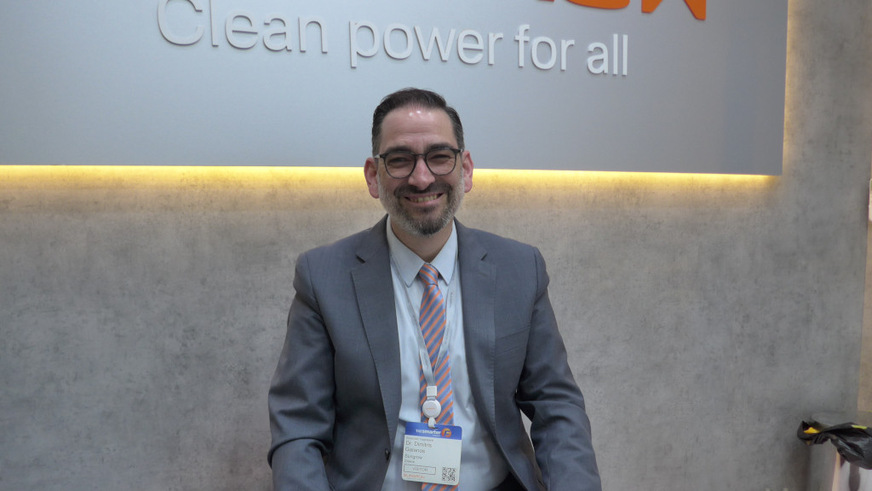
Hans-Christoph Neidlein
Booming cominbation of PV, storage and energy management
Dimitris Galanos, Regional Manager for Greece, Bulgaria, Serbia, North Macedonia, and Montenegro was positive on the development of business opportunities. The integration of solar photovoltaics with large-scale storage systems is gaining traction in Greece, supported by state tender processes and incentives. Sungrow has contributed to this development by supplying inverters and batteries for projects totaling over 5 gigawatts of capacity, which reflects the sector's maturity and appetite for innovation.
Sungrow supplies solar desalination project on Greek island
Pol Spronck, EU Sales Director at myenergi, also sees the increasing use of batteries and energy management systems to balance generation and consumption as an opportunity to stabilise the grid. The Dutch company presented new solutions for private households and businesses in Munich, including energy distributors, energy sensors, smart wall boxes and a user-friendly app.
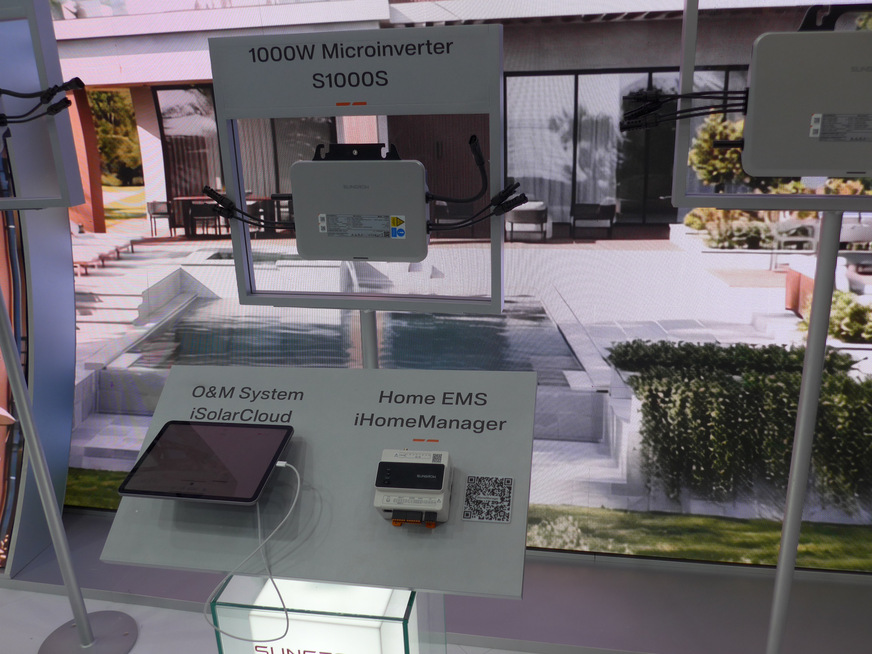
Hans-Christoph Neidlein
In addition to inverters and storage systems in all sizes, Sungrow presented fast charging solutions for commercial electric vehicle fleets and, for the first time, the iHome Manager, an energy management system for households.
Spanish battery manufacturer Cegasa showcased its modular and scalable storage solutions for residential, C&I, and utility-scale applications. Dyness (China) also showcased versatile modular battery storage systems for private and commercial applications. The young company Atmoce (China) introduced two new products – a micro inverter and a low-voltage M-ELV battery that operates at under 30 volts, offering increased safety for installers.
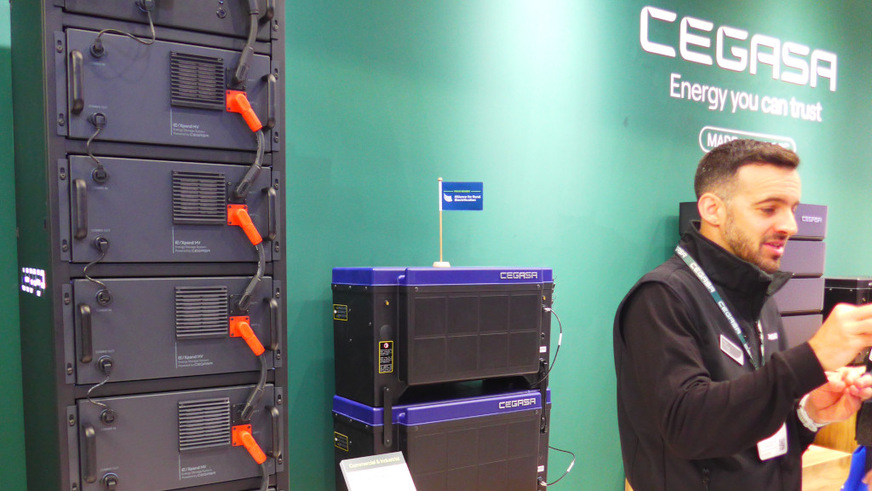
Hans-Christoph Neidlein
Hot topic cybersecurity
Cybersecurity is becoming increasingly important for controllable devices such as inverters and batteries. “Cybersecurity plays a crucial role for us when it comes to the development and use of our products,” says Christian Welz, Distribution Director Benelux, Central & Eastern Europe and Scandinavia. The company has the relevant certifications, complies with relevant regulations such as the EU General Data Protection Regulation (GDPR) and operates servers in Germany for its European business. Claire Gardner, Marketing Manager Europe at Chinese inverter manufacturer Solis (Ginlong), expressed a similar view.
Report: Cybersecurity an issue also for small rooftop solar
Goldbeck Solar presented a new cybersecurity system in Munich that is designed to reliably protect large solar installations from hacker attacks and digital threats. It is based on intelligent hardware combined with permanent interface testing, continuous monitoring of internal network anomalies, and regular identification of vulnerabilities in the network. “It is important to protect not only individual components such as inverters, but entire systems,” emphasises Sergey Bruch, Head of IT Infrastructure and Cybersecurity at Goldbeck Solar.
Advanced weather forecasting solutions
In times of increasing storms and hail events, weather forecasting systems that are as accurate as possible, such as those offered by Vaisala, are becoming increasingly important for plant operators. As a precautionary measure, tracking systems can then be laid flat to minimise wind resistance, according to Rémy Parmentier, Head of Solar and Hybrid at the Finnish company.
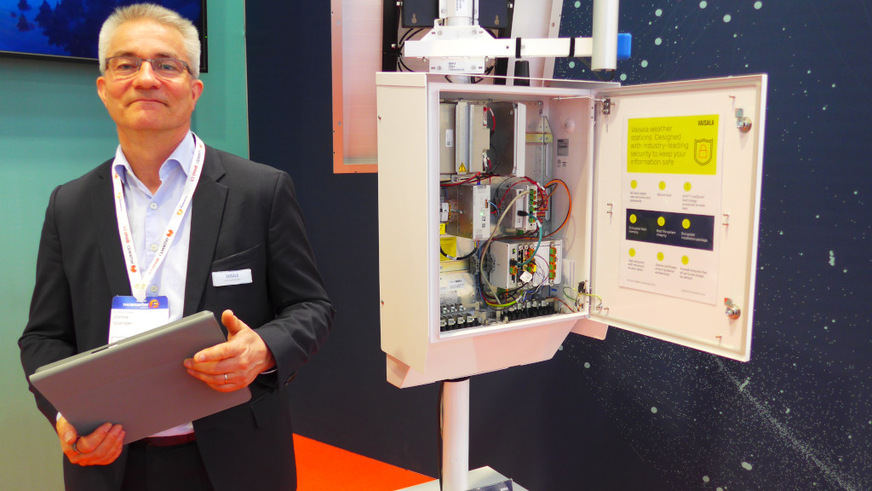
Hans-Christoph Neidlein
The Hail Alert Response System from Array Technologies uses sophisticated weather forecasting algorithms to preventively retract solar trackers about 30 minutes before a predicted hail event, as Aaron Gabelnick explained. The US company, which acquired Spanish solar tracker manufacturer STI Norland three years ago, also has production facilities in Spain. Among other things, it presented its OmniTrack, which can be flexibly adapted to hilly terrain, thus minimising the amount of groundwork required.
Advanced solar modules
Advanced solar modules also took up a lot of space in Munich. In addition to higher power output and durability, weight is often a factor, especially for large commercial and logistics roofs. Among others, Heliup from France showcased its frameless Stykon lightweight modules, which weigh less than 5 kilograms per square meter, 60 percent less than conventional modules, and can be easily and quickly glued in place. They have an efficiency rating of 19 percent and are manufactured near Grenoble. Annual capacity currently stands at 100 megawatts. According to CEO Yannick Veschetti, the next step is to achieve a module efficiency of 21 percent and expand production.
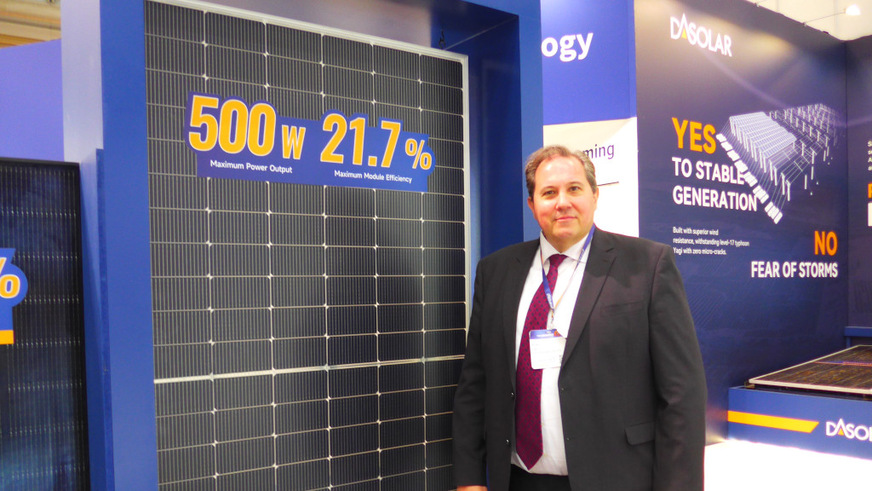
Hans-Christoph Neidlein
DAS Solar showcased its entire range of modules, from lightweight modules (efficiency 21,7 percent) and dirt-repellent modules to Topcon back-contact modules with an efficiency of 24.8 percent.
3-gigawatt solar module factory in France
The Chinese manufacturer is currently building a production facility for n-type TopCon modules with an annual capacity of 3 gigawatts in the Montbéliard region of eastern France. The ground-breaking ceremony for the conversion of an existing factory took place recently. Production is scheduled to start in spring 2026, according to Alden Lee, General Manager of DAS Solar France. 300 employees are to be hired.
Gigafactories for Europe – How large-scale production could return
Lee expects the “made in France” modules to have manufacturing costs per watt that are around 5 cents higher than in China. There are also plans to set up cell production with an annual capacity of 3 gigawatts. However, until the EU's planned subsidies for modules with European cells are implemented, the cells will be supplied from the company's main plant in China. (hcn)

